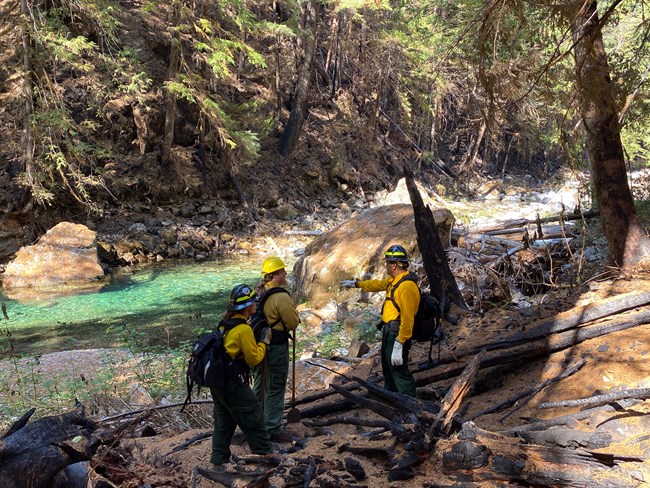Last updated: January 10, 2024
Article
Burned Area Emergency Response team protects visitors and resources from post-fire risk

NPS
The Department of Interior, Burned Area Emergency Response (BAER) Team was deployed during the post-fire recovery phase of the Sourdough Fire in North Cascades National Park to address hazards the fire created. The BAER Team worked quickly to evaluate and mitigate damage caused by the wildfire, and developed a long-term plan for repair and recovery which will stabilize soil, mitigate hazards to visitors, protect and repair trails and infrastructure, and protect important cultural and natural resources.
One hallmark success of the Sourdough Fire was the exceptional degree of coordination between the Resource Advisors (READ) and the BAER team. While READs address suppression-related impacts during the fire, the BAER team works to identify post-fire hazards and create mitigation and restoration plans to rapidly address these threats. READs identified critical resources impacted by the fire such as archeological sites, backcountry infrastructure, and rare whitebark pine populations. They shared this information to the incoming BAER team, enabling them to begin targeted assessments on their first day.

NPS

NPS
Sourdough Mountain and Stetattle Creek trails were damaged in the Sourdough Fire. The old growth forests along these trails have expansive root systems that help to stabilize the soil. When those trees and their roots burn, large holes are created in the soil; over 100 of these holes were found on the Sourdough Mountain Trail. The BAER team recommended work to repair the trails including tread repair, stabilization of the outer edge of the trail tread, debris removal, and hazard tree removal.
Invasive plants establish themselves in recently disturbed open spaces, which can slow recovery of native species. After the Sourdough Fire, most plants entered winter dormancy. As spring plants emerge, restoration crews funded through Burned Area Rehabilitation will implement recommended treatments for mitigating invasive nonnative plant populations.

NPS
